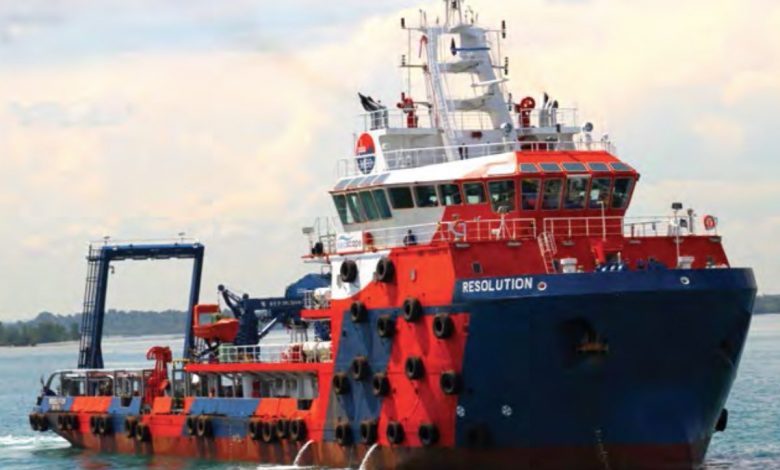Latest Splash Chat live Q&A casts a long, dark shadow over offshore

Offshore analysts, brokers, bankers, consultants and owners convened yesterday for the second ever live Q&A on Splash Chat, our new interactive forum. The discussion raised some shocking statistics and left many with the impression that there is still much more pain to come for the beleaguered offshore sector.
Conversation kicked off naturally enough with transparency in public offshore companies in Singapore and the “Swiber effect”. The oilfield services company has come in for criticism from the Singapore Exchange (SGX) for its failure to disclose its real financial situation. It sought judicial management nearly a month ago, causing shockwaves across most other offshore related Singapore stocks.
“Swiber was a train wreck in slow motion,” commented Venkatraman Sheshashayee, ceo of Miclyn Express Offshore.
“Unfortunately the SGX approach to transparency has glaring weaknesses,” said Andre Wheeler, an offshore consultant and opinion writer for Splash.
How Swiber will get out of its current financial mess took some of the discussion with Sheshashayee suggesting a scheme of arrangement is likely, much like Jaya’s in the past.
“The reality is the balance sheets of these companies cannot meet their debt / bond commitments. Working capital was used to grow bad businesses and with reduced revenues they don’t have the cash to survive let alone pay debt,” said Mike Meade, founder of offshore brokerage M3 Marine.
Quite right concurred Sheshashayee: “For too long, short term assets have been used to fund long term liabilities,” he said.
Meade felt there would be no buyers for Swiber, and so it will have to be asset stripped, and flog Vallianz (in which it is a 25% shareholder) as a going concern and watch for collateral damage with the banks.
No one participating in the discussion was willing to stick their neck out and suggest we are anywhere near the bottom of the offshore cycle. Sheshashayee noted how there are nowadays very few reliable data points for asset prices.
“I am wary of saying ‘we are near the bottom’, as each time I feel that, there is a new bottom!” he said. Nevertheless the offshore owner veteran felt the time could be “ripe” for a non-industry player with reasonably deep pockets and a reasonable risk appetite to come in and build a fleet “super cheap”.
Leading ship financier and Splash columnist Dagfinn Lunde told Splash Chat: “The winner will be the ones getting modern tonnage today and having enough cash to see it through another two to three years.”
Lunde forecast OSV mass scrapping in about a year when the banks will have had enough.
Meade was not so sure, pointing out that OSVs have no LDT so it is impossible to value a scrap sale.
Nevertheless, Sheshashayee was adamant that scrapping is a necessity for the long term health of the offshore business, but he did admit scrapping has very little economic upside for owners, hence is generally ignored oe postponed.
Andrew Craig-Bennett, Splash’s lead opinion writer, observed that PSVs tend to sit out a downturn better than AHTSs.
Wheeler agreed with this saying the AHTS market will split with real pain being felt in the smaller vessel market . Vessels with bollard pull of more than 100 tons and 8500hp will be attractive, particularly for the offshore wind farm sector and decommissioning.
In terms of eye-popping stats that showed the true dire state of the OSV markets, Splash Chatters were told that there are more than 300 vessels delivered and waiting in China alone. In total, there are now between 1,300 and 1,400 OSVs off-hire and idle, equating to more than 35% of the global fleet.
Given that, in general, breakeven utilisation is about 55-65%, this means that most owners are already running at or below breakeven.
“One more even slight push and there go the covenants and DSCRs, much like Humpty Dumpty,” quipped Sheshashayee.
“The problem is that there is no place to hide left,” commented Italian owner Giacomo Gavarone from Rimorchiatori Finarge.
“In this sort of market, the good owners will fight desperately for work in order to keep their assets out of lay up and to keep their people together. When that fails, they roll over and die,” said Craig-Bennett in the busy offshore chat.
Many felt the only way out was through dramatic consolidation in the sector. However, veteran banker Lunde cautioned: “Consolidation is good if you focus on new ships and scrap a lot of the old vessels, but consolidated bad balance sheets tend to be weak as well unless new money comes in and that is a long way away.”
“We will need banks to be understanding and give us tenors with wider latitudes and sweep-ins,” said Sheshashayee. He then joked: “This market is a great teacher. I am learning a lot about night sweats and insomnia.”
Concluding M3 Marine’s Meade had some advice: “Conserve cash, be evil with cost containment. Look after your people and now remember your friends are not in the client base nor the bank…god damn it’s lonely here!”
